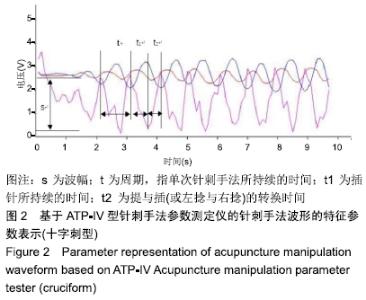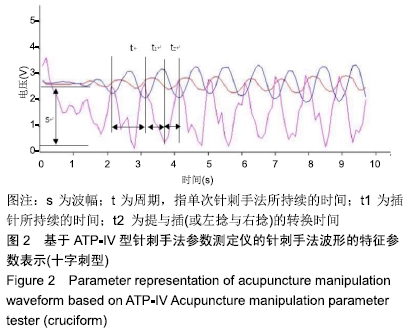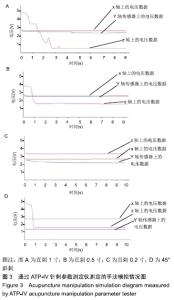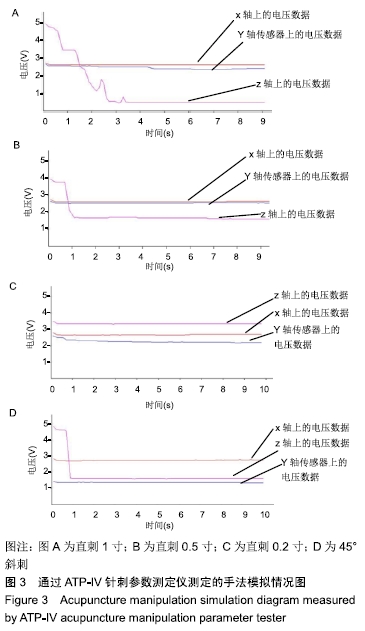[1] MARESCAUX J, CLEMENT JM, TASSETTI V, et al.Virtual Reality Applied to Hepatic Surgery Simulation: the Next Revolution.Ann Surg.1998;228(5):627-634.
[2] VÅPENSTAD C, HOFSTAD EF, LANGØ T, et al.Perceiving Haptic Feedback in Virtual Realit Simolators. Surg Endosc. 2013;27(7):2391-2397.
[3] 钟世镇.数字化虚拟人体研宄现状和展望[J].解放军医学杂志, 2003,28(5):385-388.
[4] ZHU M.Essentials of the ATAS (Time-Acupoints-Space Acupuncture).Journal of Traditional Chinese Medical Sciences.2019;(6):111-114.
[5] YANG T, SHMALBERG J, HOCHMAN L, et al.Comparison of Point Placement by Veterinary Professionals with Different Levels of Acupuncture Training in a Canine Cadaver Model. J Acupunct Meridian Stud.2017;10(5):360-370.
[6] 王荣春.针灸技术在针法和力度[J].首都医药,2005,12(4):16-18.
[7] 邵水金,牟芳芳,严振国,等.基于VOXEL-MAN针灸学三维影像浏览器的研究[J].上海中医药杂志,2005,39(11): 3-6.
[8] 王海生,邵水金,王媛媛,等.基于VOXEL-MAN操作平台肩缪穴的三维可视化研究[J].中国针灸,2006,26(11):789-790.
[9] 闵友江,王海生,严振国,等.试论传感技术在针灸推拿学中的应用与研究等[J].上海针灸杂志,2006,25(12):27-29.
[10] 丁龙辉. 虚拟针刺手术软组织形变建模与力反馈算法研究[D].天津:天津工业大学,2018.
[11] 汤文成,蔡传宝.皮肤生物力学研究进展[J].东南大学学报(自然科学版),2006,36(3):493-498.
[12] 高瞻,潘飞,王杰华,等.虚拟软组织针刺与力觉交互[J].系统仿真学报,2015,27(10):2453-2459.
[13] 阿古拉.蒙医传统疗法[M].呼和浩特:内蒙古教育出版社,2012: 161.
[14] 明•杨继洲.针灸大成[M].10卷.北京:人民卫生出版社,1957:150.
[15] 赛音朝克图.蒙医、中医针刺手法比较研究[D].北京:北京中医药大学,2013.
[16] 唐文超.基于运动视频和自组织特征映射神经网络的针刺提插手法量化分类研究[A]//中国针灸学会.2017世界针灸学术大会暨2017中国针灸学会年会论文集[C].中国针灸学会:中国针灸学会,2017:3.
[17] OKAMURA AM, SIMONE C, O'LEARY MD. Force modeling for needle insertion into soft tissue. Biomedical Engineering, IEEE Transactions on (S0018-9294).2004;51:1707-1716.
[18] HAN L, HIPWELL JH, TANNER C, et al. Development of Patient-Specific Biomechanical Models for Predicting Large Breast Deformation.Phys Med Biol.2012;57(2):455-472.
[19] 杨浩.基于数字人体的针灸触觉反馈和组织形变研究[D].上海:上海交通大学,2009.
[20] YANG X, LU D, MA C, et al. Analysis on the multi-dimensional spectrum of the thrust force for the linear motor feed drive system in machine tools.Mechanical Systems and Signal Processing.2017;(82): 68-79.
[21] PALTER VN, TEODOR PG. Virtual Reality in Surgical Skills Training.Surg Clin North Am. 2010;90(3):605-617.
[22] 徐刚,杨华元,刘堂义,等.《针灸器材原理与应用》实验课程的研究性实验教学探索与实践[J].中国针灸,2018,38(6):645-648.
[23] XU Y, GUO Y, SONG Y, et al.A New Theory for Acupuncture: Promoting Robust Regulation.J Acupunct Meridian Stud.2018; 11(1):39-43.
[24] LEE NR, KIM SB, HEO H, et al.Comparison of the Effects of Manual Acupuncture,Laser Acupuncture, and Electromagnetic Field Stimulation at Acupuncture Point BL15 on Heart Rate Variability. J Acupunct Meridian Stud. 2016; 9(5):257-263.
[25] ZHAO F, ZHANG Z, ZHAO Y, et al. The effect of electroacupuncture preconditioning on cognitive impairments following knee replacement among elderly: A randomized controlled trial.World Journal of Acupuncture Moxibustion. 2018;(28):231-236.
[26] WANG W, NI R, YU F, et al.Optimization of GERD Therapeutic Regimen Based on ANN and Realization of MATLAB. Digital Chinese Medicine.2018;(1):47-55.
[27] 李强,王雪婧.虚拟现实技术在中医针灸取穴中的应用[J].亚太传统医药,2016,12(23):75-76.
|





